Top Image: Sergeant Howard Brodie drawing courtesy of the Library of Congress.
The Guadalcanal campaign was the first American amphibious invasion of World War II. From the moment US Marines set foot on the southwest Pacific island of Guadalcanal on August 7, 1942, American newspapers trumpeted the offensive. War correspondents Richard Tregaskis and John Hersey immortalized the 1st Marine Division’s struggle to defend the small American beachhead against repeated Japanese infantry assaults and naval and air bombardments. Americans closely followed the desperate fights for Bloody Ridge and the Marine airfield dubbed Henderson Field. Tregaskis, however, concluded his famous Guadalcanal Diary in September 1942, and Hersey departed the island in October, long before the fighting ended. As a result, the latter stages of the campaign are often overlooked, despite the intense combat that continued until the island was secured in February 1943.
Although the 1st Marine Division and its attached Marine raider and parachute elements had successfully defeated Japanese attacks at the Battle of the Tenaru in August, the Battle of Bloody Ridge in September, and the Battle for Henderson Field in October, Japanese forces still held the high ground just six miles southwest of Henderson Field in the wake of these defeats. A hill known to Americans as Mount Austen was the biggest threat to the airfield. Japanese artillery situated on the hill harassed Henderson Field, and Japanese soldiers infiltrated American lines near Mount Austen on two occasions and destroyed several parked fighter planes. Mount Austen and its surrounding heights also threatened the left flank of any American attempt to advance west along the northern coast of Guadalcanal toward the Japanese-held village of Kokumbona.
Mount Austen stood 1,514 feet tall, but it was just one hill in an area of the island laced with ridges and valleys. Lieutenant John George of the 132nd Infantry Regiment’s Second Battalion described how the jungle in this part of the island consisted of “huge trees of tropical rain forest varieties, mostly of the buttress rooted type, which reached their straight trunks up to great heights before spreading their branches to form the absolutely sun proof roof. The ground spaces in between the trunks were crowded with a dense undergrowth of huge ferns, thorny growth, and all sorts of vines and palmetto-like plants.” Soldiers in the jungle could rarely see 10 feet ahead unless they were on a trail.
Between Mount Austen and two other adjacent hills, approximately five hundred Japanese soldiers of the 124th and 228th Infantry Regiments occupied nearly 50 well-camouflaged bunkers in a U-shaped complex called “the Gifu.” Most of these bunkers rose less than three feet above the ground, and their dirt-covered, log roofs withstood even direct hits from 75mm artillery shells. The positions concealed machine guns with carefully sited fields of fire, supported by artillery inside the Japanese perimeter.
In early December, the 23rd “Americal” Infantry Division, 2nd Marine Division, and 25th Infantry Division began relieving the battered 1st Marine Division. In preparation for the final American offensives to capture the island, US Army Major General Alexander Patch ordered the 132nd Infantry Regiment of the 23rd Infantry Division to seize Mount Austen and the surrounding fortified positions.
The initial American assault began on December 17, when Company L of the 132nd Infantry Regiment’s Third Battalion began the trek to Mount Austen. At the base of the hill, Japanese rifle and machine gun fire pinned down the company. The balance of the Third Battalion was brought up to support the attack, but as one officer observed, “the trail leading to the foot of Mount Austen was extremely rugged and cut through dense jungle, and the troops were too exhausted to attack when they arrived.”
The following morning, American fighter-bomber attacks had little effect on the expertly camouflaged Japanese defenses, as the battalion discovered when Japanese fire again halted its lead elements. The Third Battalion’s commander, Lieutenant Colonel William C. Wright, decided to conduct a personal reconnaissance of the Japanese positions and went ahead with only his radioman, two forward observers, and a handful of scouts. A concealed Japanese Nambu machine gun ambushed the group, killing Wright and seriously wounding his companions. “His death was a serious blow to the battalion,” wrote Lieutenant John George. It took several hours to recover Wright’s body, and machine gun fire wounded several other soldiers who attempted to reach him.
Major Lou Franco assumed command of the battalion after Wright’s death, while the battalion dug in at the foot of Mount Austen. Franco sent out patrols to test Japanese defenses, and the First Battalion deployed to the left of the Third Battalion to reinforce the coming attack. The two battalions spent the next several days probing Japanese defenses, while an engineer company built a narrow road to their positions in order to facilitate resupply.
By December 22, the two battalions had managed to secure only a foothold on the smaller Hill 31, adjacent to Mount Austen. Two days later, Japanese resistance halted the advance of three entire rifle companies. The Americans’ advantage in air support, artillery, and heavy machine guns proved useless in the low visibility fighting. Lieutenant Don Hogan explained how “It would cost us one or two men to find the direction the [Japanese] fire was coming from, then it would cost us two more men to get up to the back door. When we finally got on the dome it was easy to kill the crew.” The mutually supporting Japanese bunkers exacted a heavy toll on the GIs, and nearly every Japanese soldier died in their fighting position.
The three infantry companies of the Third Battalion attacked up Mount Austen again on Christmas day, but the advance faltered when they met withering fire in the first few minutes of the assault. The Third Battalion was stretched thin by its attempts to outflank the Japanese positions and was unable to concentrate enough strength in any one spot to force a breakthrough. Instead, the battalion was ordered to hold its position while the First Battalion moved south and attacked the Japanese right flank. The First Battalion also made no headway owing to the terrain and tenacious Japanese resistance. The First and Third Battalions had lost 34 men killed and 279 other casualties, with little to show for their sacrifice.
Finally, on January 1, 1943, the 132nd Infantry’s commander ordered the First and Third Battalions to hold their positions while the Second Battalion undertook a flanking maneuver around the Gifu longer than any that had yet been attempted. The Second Battalion marched nearly two miles through dense jungle growth, aided by native Solomon Islanders. These Pacific islanders served as jungle scouts and as porters for units whose supply lines stretched miles over narrow jungle trails. Lieutenant John George was amazed at the strength and endurance of these men. “I do not believe that the ones who worked for us would have averaged more than… 130 pounds in weight, yet they could carry more than half of that poundage and still outmarch a tough, lightly armed American infantryman.”
The First Battalion’s flanking maneuver achieved complete surprise because the Japanese regiments had committed most of their men to holding the line against the First and Third Battalions. On January 3, the Second Battalion rushed over the barren crest of Mount Austen, but Japanese forces in the Gifu immediately realized their mistake and launched six successive counterattacks against the American soldiers on Mount Austen. The GIs did not have time to dig new foxholes in the rocky summit, so they occupied former Japanese positions and repelled the assault with small arms fire, grenades, and artillery support.
In the midst of the Japanese counterattacks, Lieutenant George’s platoon was ordered to climb Mount Austen and reinforce the beleaguered American soldiers. When George reached the summit, he could hear hundreds of Americans and Japanese firing rifles and throwing grenades. “It was a sore thumb—that hill—a mound of grass, sod with coral beneath, with jungle all around. And the enemy was making full use of that jungle—enjoying to the fullest the advantage of firing upon a helplessly exposed target from good cover.” When night fell, Japanese soldiers attempted to infiltrate the American lines. One American sergeant had to jump out of his foxhole three times during the night to avoid Japanese grenades that landed in it. Each time after they exploded, he dived back into the position and resumed fighting.
The battalion held Mount Austen for the next week until US forces completed the encirclement of the Gifu on January 17. That morning, American artillery batteries unleashed a barrage of 105mm shells on the Japanese positions. The following day, American soldiers succeeded in destroying several of the bunkers and killing a number of Japanese who attempted to break out that night. On January 22, American forces managed to bring a Stuart light tank up their newly cut supply road to Mount Austen. The added firepower of the tank’s 37mm gun reduced three Japanese bunkers in short order and breached the perimeter of the Gifu.
The Japanese commander, Major Takeyoshi Inagaki, realized his position was untenable and gave the order for a final suicide charge at 2:30 a.m. on January 23. An estimated one hundred Japanese soldiers were killed in this final charge. When the battle was over, the US Army counted 112 killed and 268 wounded. The Japanese lost an estimated four hundred men in the fight for Mount Austen and the Gifu.
In the wake of the battle, Japanese forces conducted a fighting withdrawal west to Cape Esperance, where the Japanese Navy successfully withdrew their remaining soldiers during the first week of February. American commanders declared Guadalcanal secure on February 9, 1943.
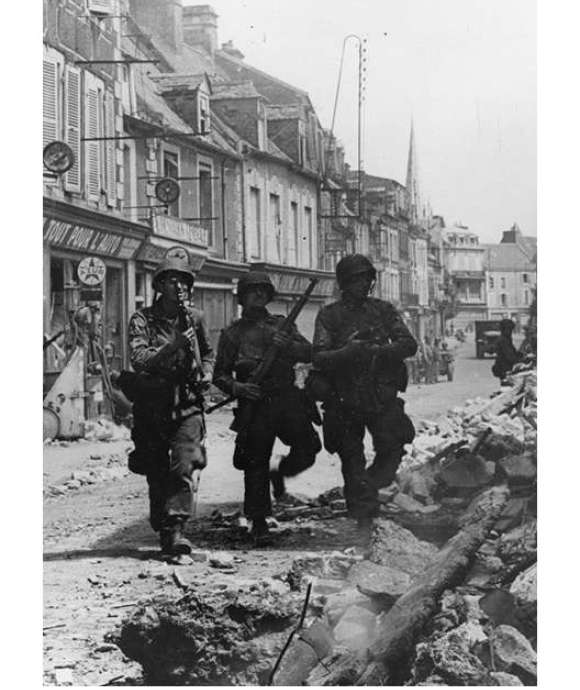
Forgotten Fights: The 101st Airborne at Carentan, June 1944 by Author Mitch Yockelson, PhD
The allied invasion of Normandy, June 1944, including the capture of Carentan by American airborne, helped facilitate the destruction of German forces in northwest Europe.
Tyler Bamford
Tyler Bamford was the Sherry and Alan Leventhal Research Fellow at the Institute for the Study of War and Democracy at The National WWII Museum from 2019-2021. He obtained his PhD in history from Temple University and his BA in history from Lafayette College.
Cite this article:
MLA Citation:
APA Citation:
Chicago Style Citation:
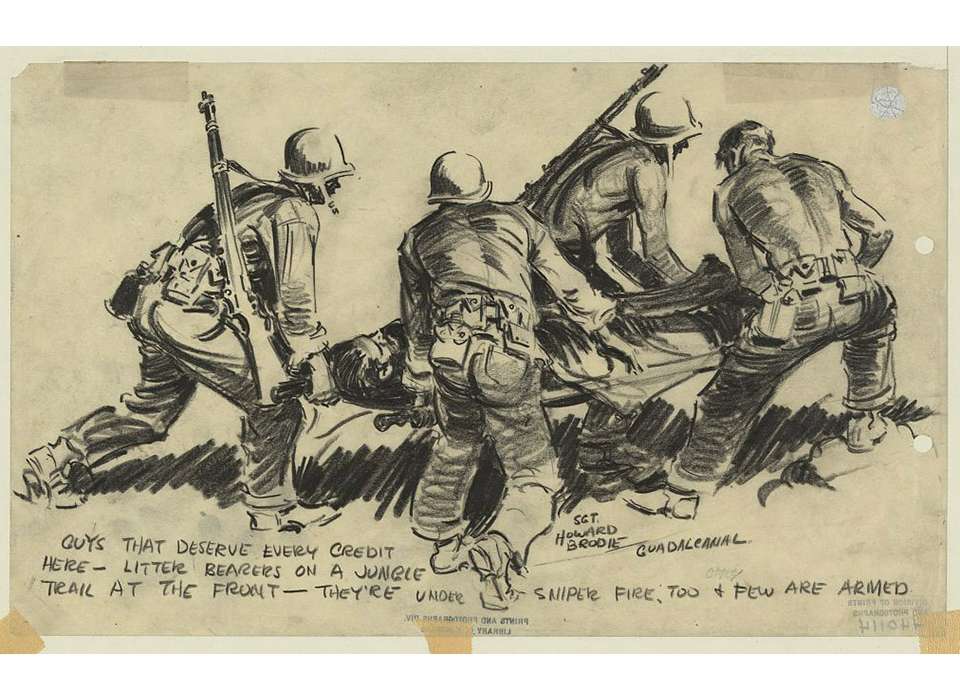
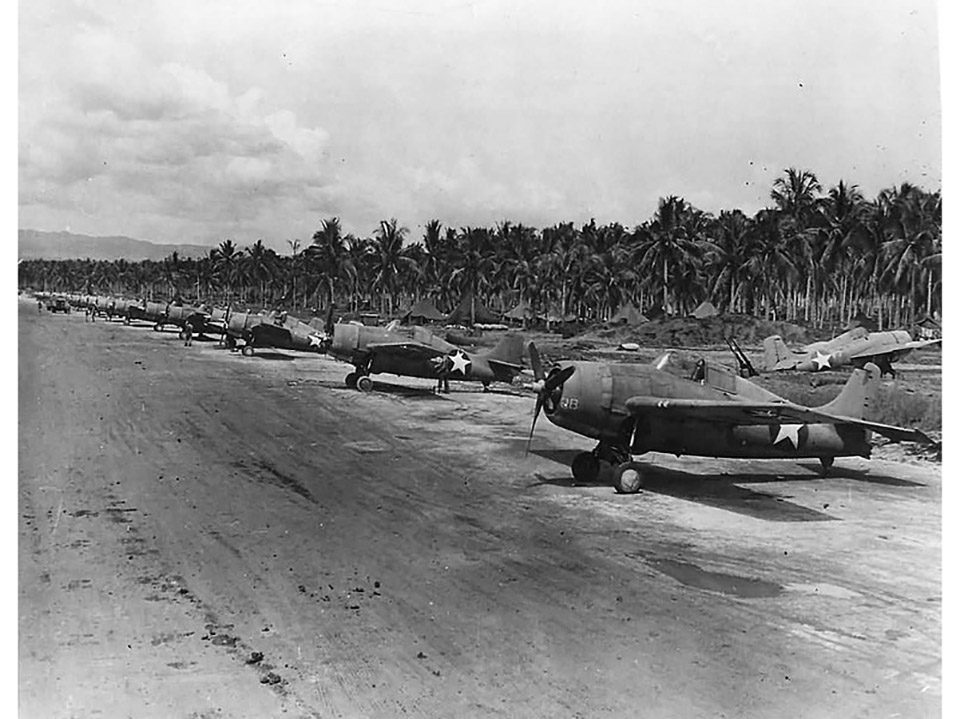
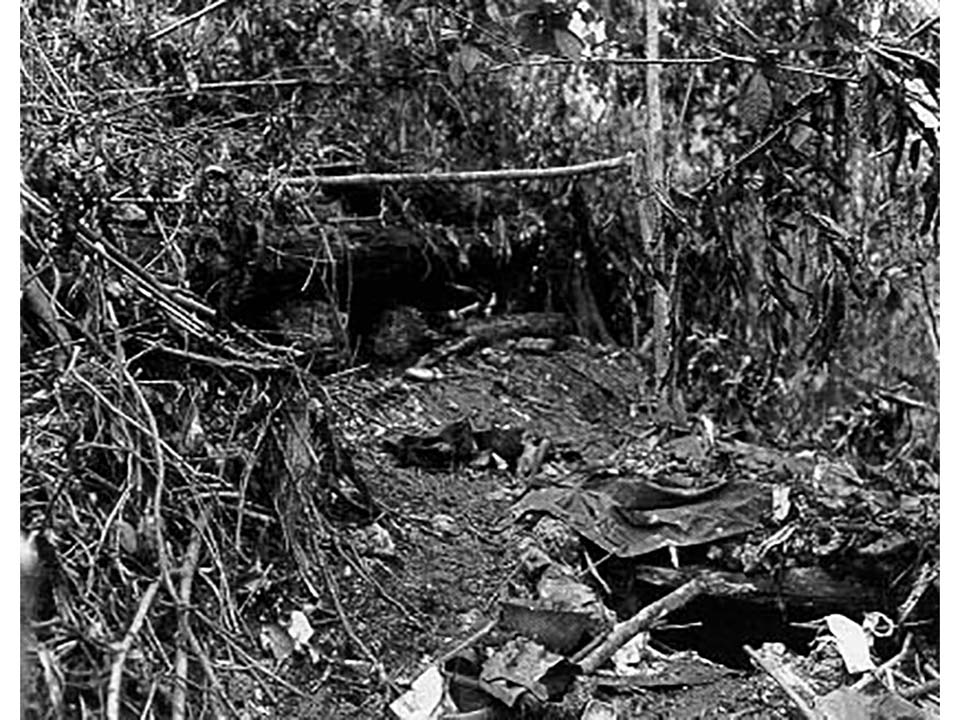
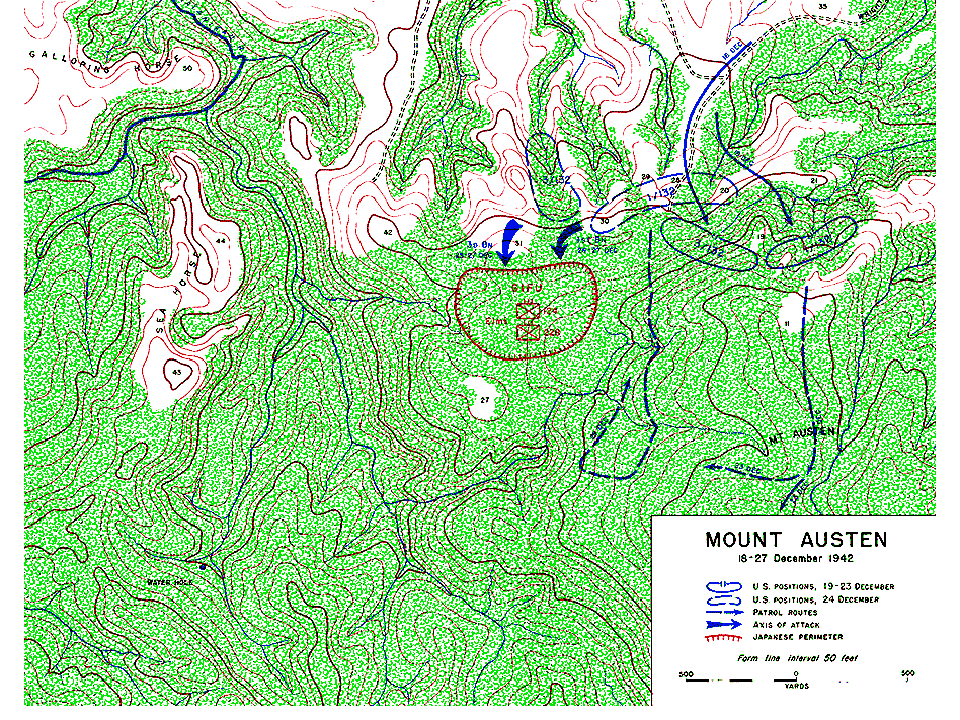
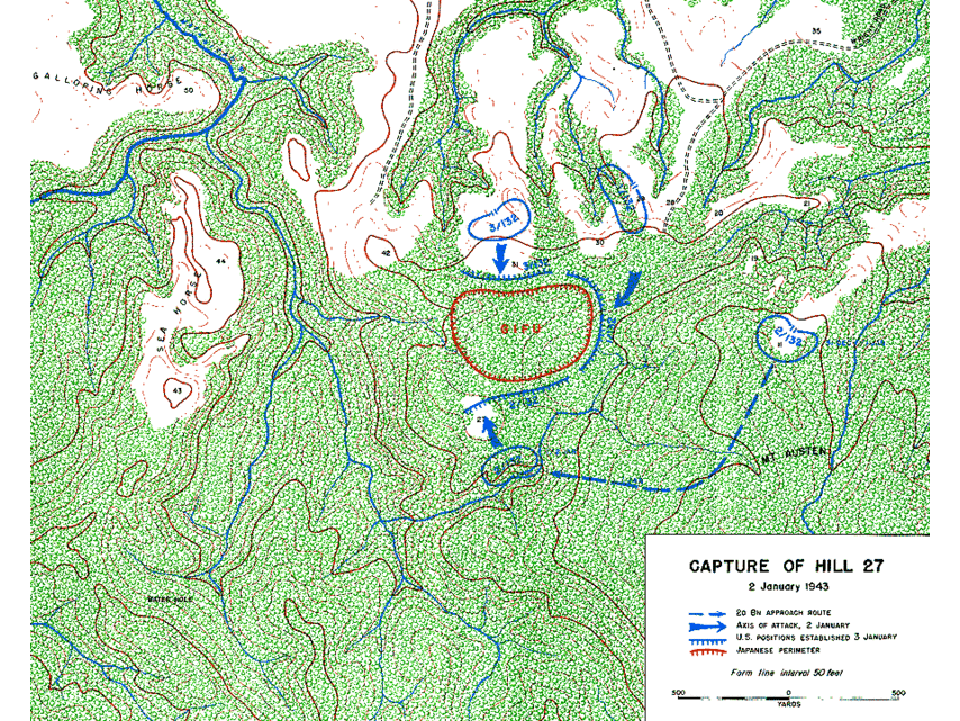
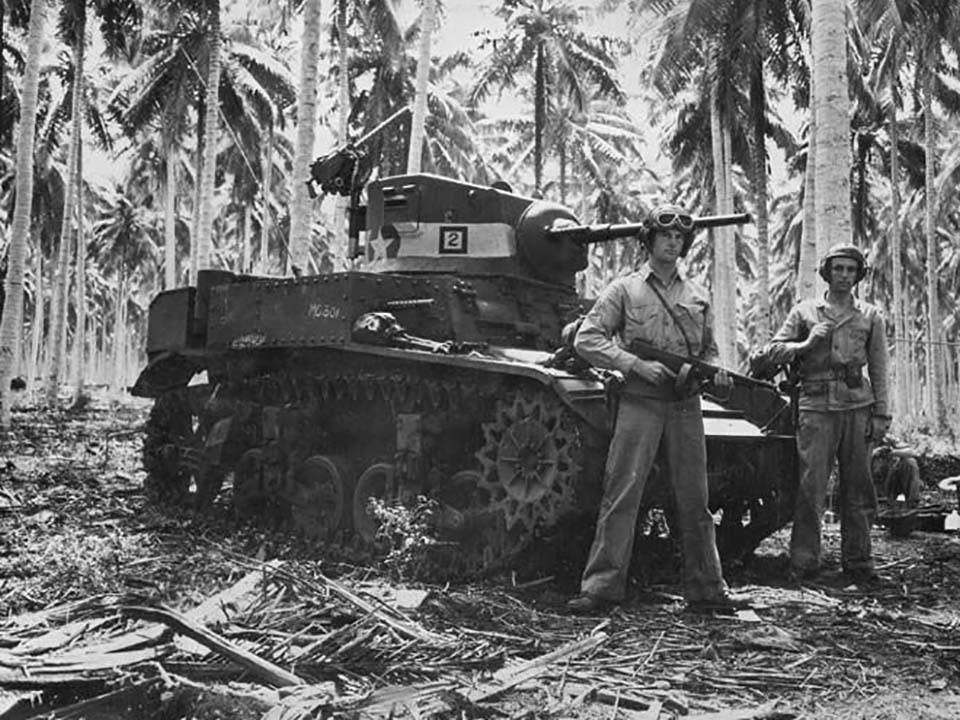






![Max Fuchs, New York City cantor, sings as Rabbi Sydney [sic] Lefkowitz, Richmond, VA, conducts the first Jewish services from Germany.](/sites/default/files/styles/max_650x650/public/2025-10/image1.jpg)

